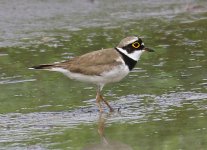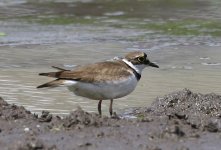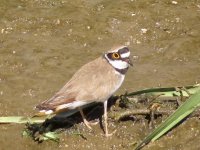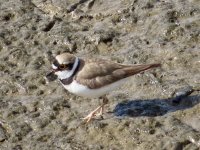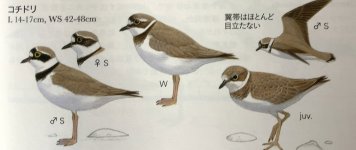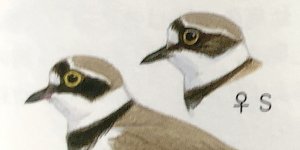We have breeding Little Ringed Plovers near my house in central Japan (Nara, near Osaka). To be honest, I've never really paid attention to any possible difference in plumage between males and females, and (most) books that I have don't say anything about any difference. Also, it's one of those birds that if you have a few photos, then you think, 'They all look basically the same, why take any more?'
But after seeing your question, and Alexander's reply, I looked at a few photos I have from the breeding season, and I did indeed note a difference between a linked pair, and I attach the photos below.
The (I presume) male has a blacker mask and also a red patch on the lower mandible near the throat. The female (I presume) has a browner mask in the area behind the ear, and lacks the red patch. Also, the yellow eyering seems more dynamic and broader in the male.
On this basis, I would suggest that both of your photos show males.
The two photos I attach were taken at exactly the same spot but one hour apart. This hour is the time it takes me to do the circuit of my regular spot - so, I took the first photo at the start of my walk, and the second at the end of the walk. I don't remember why I took the photos, except that if birds pose looking as though they want to have their photo taken, then why would you not?
